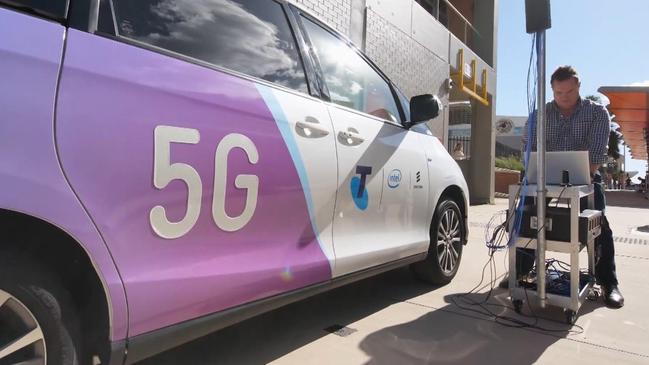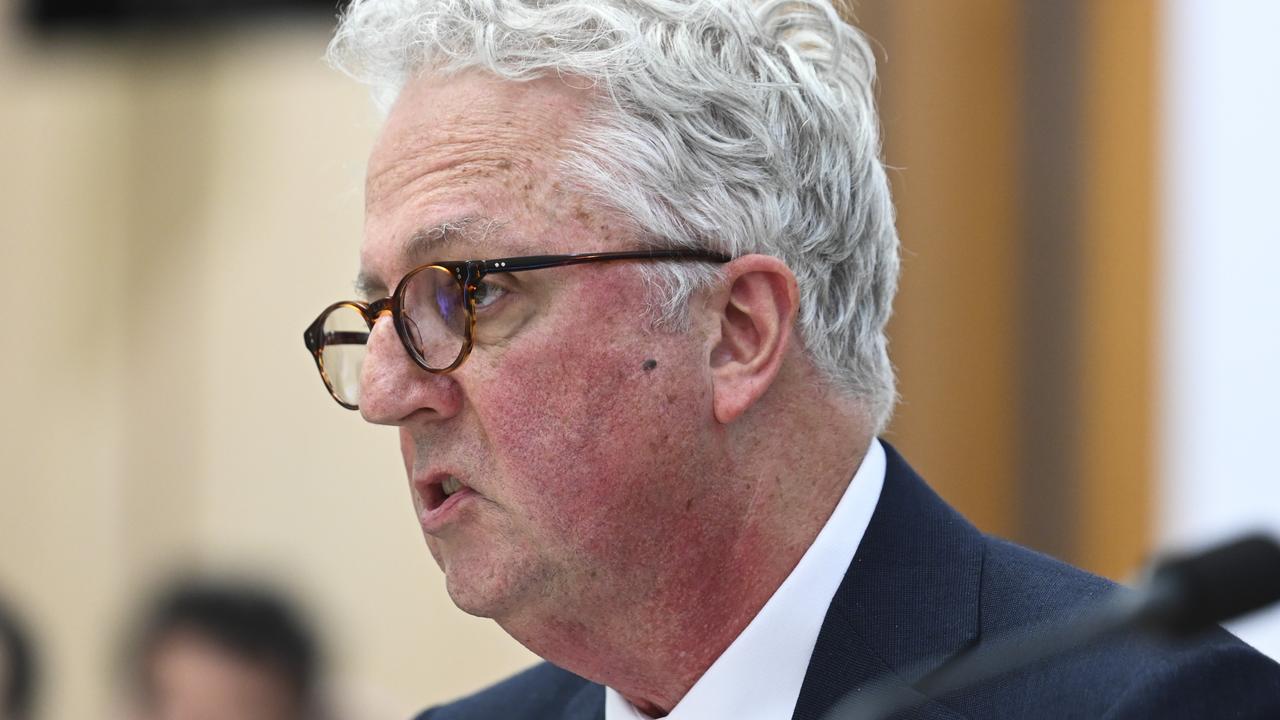
The impact of COVID-19 on corporate profits and the economy will be worse over the next 12 months at least, with Telstra and AGL joining CBA in issuing downbeat forecasts.
Telstra has extended the COVID-prompted delay in sacking 2000 staff from October this year under its T22 restructuring plan until February next year, but made clear the jobs will definitely go then.
It is only one company but indicative of the trend, which saw some businesses actually add staff in the early days of the lockdowns — but as they get back to business the job cuts will come in earnest.
Unless COVID is under control by then and the economy improves, the corporate profit reports paint a dismal outlook for this financial year.
Employment firm Seek has forecast a sharp fall in earnings this year and warned the jobs lost would not be returned unless big changes are made by government and business.
Telstra reported a $200m hit to earnings due to COVID for the 2020 financial year, saying this would double this year, due to a range of factors including increased costs, more customer bad debts and a slowing of productivity programs.
Uncertainty is the biggest threat to business sales and investment and its impact on the profits released this week is painfully clear.
As a sign of cost increases, Telstra chief Andy Penn has just signed off on a $1m order for sanitiser and $1.5m in masks for staff to help cope with the pandemic and Melbourne head office staff are mostly working from home.
AGL said underlying profit this year would be about $550m when one-off gains were excluded, down from $816m last year and over $1bn in 2019.
Earnings this financial year will be below the $701m reported in the 2016 financial year.
Luckily for chief executive Brett Redman, he scored highly on the range of metrics which determine his pay, which rose by $700,000 to $3.9m.
The Telstra sackings come at the same time as the banks will wind back loan deferrals.
JobSeeker payments are poised to return to lower levels after December and a massive 71 per cent of small businesses are now reporting falls in sales due to COVID.
ACA research surveys show 73 per cent of small businesses are concerned about their future and only 34 per cent expect returns to pre-COVID levels this year.
The small business returns are crucial given they account for over half of Australian jobs, with 900,000 firms employing five million people and another 1.4 million self-employed.
Thursday’s jobs figures showed unemployment at 7.5 per cent, which was better than expected, albeit the worst job numbers for 22 years.
Economists think by year’s end the rate will be closer to 9.6 per cent.
Telstra’s profit downgrade and a growing list of factors outside its control were the main reasons for the 7.7 per cent fall in its stock price to $3.13.
The main problem facing Penn is the ever-present list of factors outside his control, with NBN the obvious starting point, thanks to his predecessor Sol Trujillo’s refusal to negotiate with the Rudd government, prompting its decision to build the NBN and rob Telstra of its high-margin fixed wire monopoly.
Earnings before interest, tax, depreciation and amortisation have fallen from $10.5bn in 2016 to $8.9bn last year, dividends have fallen from 31c a share to 16c, and the company’s stock price from $5.56 to $3.13 over the same period.
Amid the battle, Penn’s actual pay fell 27 per cent from $4.9m to $3.7m last year.
The rent is safe and on a statutory basis most of his direct reports had slight increases in the year, even though their variable pay was based just 50 per cent below target.
This still saw Brendon Riley increase his earnings from $2.7m to $2.9m and Michael Obeid from $1.6m to $2m.
Penn argues the NBN decision has robbed him of $2.6bn a year in earnings, offset in part by $7.1bn in compensation payments.
These will continue at the rate of $1bn a year, but the problem is NBN has to maintain high charges to get a small return, or the federal government will have to put its $51bn in debt on its books.
The government doesn’t want that and in any case NBN’s Stephen Rue is looking better now it has rolled over and won Telstra’s heart by increasing capacity at no charge during COVID.
Rue needs to start charging again and Telstra will of course object loudly, with Penn saying on Friday the NBN charges are “unsustainable”.
Rue is talking about fibre upgrades to move to the long-term objective of fibre to the home, but he won’t be spending more money unless he can get the retailers to pay for it.
Penn says let’s stop the Telstra versus NBN debate and think about the digital future, which is correct, but also commercially in Telstra’s interest because it has nothing to lose by any writedown in the value of the NBN, which in turn would mean taxpayers would be forced to recognise the cost of the project.
In the first quarter of next year the government will be selling new wireless spectrum, which will allow Telstra and the rest of the industry to move into 5G big time.
While Telstra talks up 5G its real benefit will be in industry, not the phone you and I use.
The internet of things will be the revenue driver, with SIM cards on your fridge and machines in factories.
The new spectrum is data-rich but doesn’t travel far, so it will require more small cells to be installed to carry the messages, which all means more money for Penn to spend.
The immediate battle is over mobile phone charges, with the newly combined Vodafone and TPG refusing to follow Telstra’s attempt to raise prices.
Telstra has roughly half the mobile market, so you would expect it to lead pricing, but for the moment Optus and Vodafone are fighting out the middle ground, confirming the suspicion it is the Singapore Telecom offshoot Optus, not Telstra, with most to lose from the TPG merger.
McInnes makes right call
Back in his David Jones days there was talk that Mark McInnes had missed the online revolution, which was why the retailer struggled in later years.
In his new home at Premier that talk was put to rest as it released figures showing when he joined in 2013 the company invested in a dedicated warehouse on the fringes of Melbourne to handle online sales.
The owner of Smiggle, Peter Alexander et al on Thursday reported sales for the latest half down 18 per cent to $484m, but online sales had increased by $50m or 70 per cent to $123m or 25.4 per cent of total sales.
Better still, unspecified profit margins on online sales were higher so total earnings will be higher in the half.
Back in the second half of 2013 online sales were $9m.



